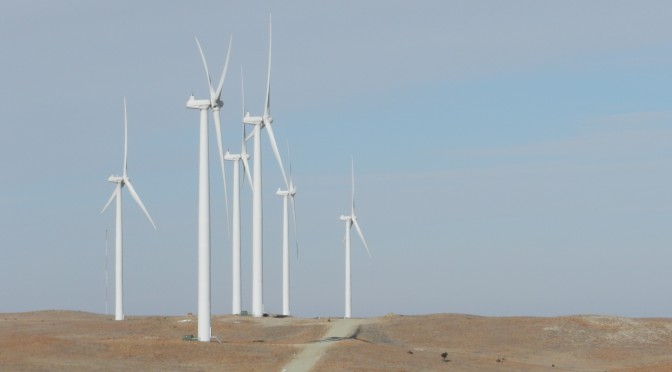A recent Lincoln Journal Star editorial “Plan for next drought” (LJS, Aug. 21) appropriately stated that Nebraska “should spur adoption of better water conservation practices in the public and private spheres.” Nebraska public power entities are reviewing their electricity generation portfolios and determining what role — if any — wind and other renewable energy will play. As Nebraska’s drought worsens, how Nebraska’s current electricity generation affects Nebraska’s most precious natural resource — water — should be considered.
Nebraska ranks fourth in the United States for wind resource. Nebraskans also should know water use and coal-fired electricity generation facilities are joined at the hip, using tens of thousands of acre-feet of Nebraska’s surface and groundwater to cool their plants. Wind, however, uses no water to generate electricity. Wind is Nebraska’s second most valuable natural resource behind water. Wind is “mechanical generation” — gears turning a generator. Coal, natural gas and nuclear are “thermal generation” — combustion creating steam to turn a generator.
Nebraska’s coal-powered generation units use billions of gallons of water yearly from the Ogallala Aquifer and Platte River, yet no one asks how much that impacts the state’s irrigation, industrial and residential water supply. A wind turbine operates at full capacity 40-50 percent of the time. But, 70 percent of every BTU in the combustion process of a coal generation unit goes unused due to expended steam or unused heated water. The 150-degree water discharged at the end of the process takes BTUs to heat even though it’s not creating steam at that temperature.
Nebraska currently exchanges local electricity rate payers’ dollars for Wyoming coal, but coal is exploiting Nebraska’s water. And perhaps more unsettling is that Nebraska sells about 25 percent of its generated electricity out of state according to the most current U.S. Department of Energy EIA (Energy Information Association) report. That means Nebraska’s ratepayers and taxpayers bear the liability cost of dirty air and water for exported electricity. Nebraska’s power generators sell their excess power to Kansas and surrounding states — often at a loss — and then Kansas turns around and sues Nebraska for our water. For instance, Nebraska Public Power District’s (NPPD) Gerald Gentleman facility, a 1,365 megawatt coal generation unit at Sutherland, Neb., is in the middle of an over-appropriated Natural Resources District putting that plant in conflict with Nebraska’s farmers competing for the same water.
NPPD says their cost of power generation is between 3-4 cents per kWh. Lincoln Electric System (LES) bought power from the Petersburg, Neb., wind farm for four cents per kWh. Testimony in legislative hearings by wind representatives stated the generation cost of wind farms were about 3.5 cents per kWh, validating wind can produce power in line with Public Power’s cost assumptions from coal and nuclear.
Nebraska has 6,000 megawatts of power generation. The National Renewable Energy Lab (NREL) shows Nebraska could build 3,000-4,000 megawatts of wind farms. Admittedly, wind is an inconsistent power source. But, if wind is at kw/hour parity with coal, then simple supply and demand principles mean if Nebraska brought online 50 percent more power generation, the price goes down. When the wind does blow, the supply of electricity from the wind farms also drives prices down. Electricity, regardless of how it’s generated, is a commodity.
What have gone up are public power’s overhead costs. Nebraska’s consumers have seen a 50 percent increase in rates across the state over the past five years while the price of electricity generated from wind, coal and natural gas has been static.
It’s important for us to consider a new way of thinking about energy; One that gives Nebraska a chance to preserve its water supply and keep Nebraska ratepayers’ money in the state by moving more of our power generation away from thermal coal generation to mechanical wind generation. This will preserve Nebraska’s water to meet federal endangered species demands and meet the LB962 mandate to return the Platte River to 1997 flow levels. New thinking about wind also can meet our interstate water compact legal requirements, provide drinking water for our residents and protect our agriculture economy and the state’s 120,000 irrigation wells. Our energy policy is our water policy.
Gary Aksamit, a native of Bruning, Nebraska, is an energy broker and a developer of small and large wind projects in Nebraska. http://journalstar.com/news/opinion/editorial/columnists/local-view-can-wind-save-our-water/article_0c7abb2d-7c3c-5adf-9098-105ccff075b5.html


